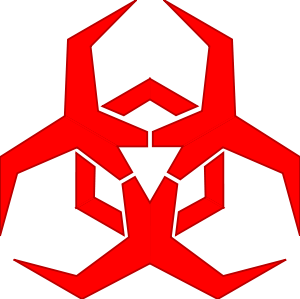This blog post discusses how Nuclear Pack, one of the most popular exploit kits, has evolved, and highlights the constant, ongoing arms race between attackers and defenders.
While Nuclear Pack is not the most sophisticated exploit kit–that dubious distinction going to Angler]–it is highly effective. It has been used in such high-impact campaigns as the AskMen compromise, and used by the APT group behind Operation Windigo. Nuclear Pack has a wide range of attacks in its repertoire, including Flash, Silverlight, PDF, and Internet Explorer exploits, and it is capable of dropping any malware. Furthermore, Nuclear Pack is constantly being improved by its creators to avoid detection and achieve higher infection rates.
Free eBook: Modern Retail Security Risk – Get your copy now.
Exploit kits are a main source of compromises today; they are one of the primary vehicles for both 0-day and widely effective, known vulnerabilities, offering a free pass to drop active malicious content (such as the banking trojan Zeus) that embeds on the system, giving cyberciminals a way into internal networks and the means to commit data exfiltration. Last year, Websense detected and blocked more than 66 million threats specifically with exploit kits, plus over 1 billion catches of later-stages, such as dropper file and C&C traffic (Call Home stage) that are commonly attributable to new exploit kit activity. In essence, exploit kits are complete, off-the-shelf solutions that cybercriminals can buy to compromise systems by exploiting various software vulnerabilities on the victim’s system. In addition, these kits are equipped to defeat IDS and anti-virus solutions in order to avoid detection. The main technique they use to achieve this is code obfuscation, which is used to hide the true nature of malicious code. Exploit kits constantly change and improve in order to keep up with various security solutions. The new version of NuclearPack is just the next stage of exploit kit evolution.
Telemetry
Nuclear Pack affects virtually all industries, as it is very often used in high-volume compromises. In addition, the number of exploit attempts varies highly based on the traffic volume of the compromised website, as shown in the charts below.
Affected Industries:
Nuclear Pack trend activity over time:
High Level Overview of Nuclear Pack infections
Nuclear Pack follows the traditional kill chain and maps directly to the 7 Stages of Advanced Threats. Websense customers are protected from this threat with ACE, our Advanced Classification Engine, at the following stages:
– Stage 2 (Lure) – ACE has detection for the compromised websites.
– Stage 3 (Redirect) – ACE has detection for the injected code that redirects the user to the exploit page.
– Stage 4 (Exploit Kit) – ACE has detection for the malicious code that attempts to execute this cyber attack.
– Stage 5 (Dropper Files) – ACE has detection for the binary files associated with this attack.
The picture below shows all stages, from the first HTTP transaction with the compromised website. It is worth noting that the original version of Nuclear Pack was seen to use predictable URL patterns. In the new version of Nuclear Pack, the redirect URLs and methods are highly random, making the redirect stage much more difficult to detect.
Nuclear Pack infection chain:
Obfuscation
As with other exploit kits, Nuclear Pack uses various obfuscation techniques to avoid detection by IDS and anti-virus solutions. In order to detect and protect against this threat, it is crucial to understand and identify the obfuscation techniques that are unique to this exploit kit.
After cleaning up the landing page so that it is properly structured, we are still left with highly obfuscated JavaScript code.
Cleaned up Landing Page (part I):
Cleaned up Landing Page (part II):
Investigating the structure of the obfuscated code reveals that it actually consists of only a few parts:
1. Some helper routines for deobfuscation
2. Obfuscated content (uses decimal format to store the plugin detect and actual exploit part of the exploit kit)
3. Deobfuscation routines
4. The actual deobfuscation
5. Running the deobfuscated JavaScript
How Nuclear Pack deobfuscation works
In essence the landing page just takes the obfuscated content, deobfuscates it, and then runs it.
One of the most unique Nuclear Pack obfuscation techniques is the use of the background color as means to obfuscate and deobfuscate certain functionality. The original version of Nuclear Pack always sets the background color of the page to an arbitrary color. Later, the variable document.bgcolor is used to deobfuscate a number of functions, which were obfuscated with hexadecimal HTML color values.
Unique obfuscation method: <body bgcolor=”#333399″> is used in the example below
Deobfuscated Content
Once the exploit kit is deobfuscated, the true functionality of the exploit kit is revealed. The deobfuscated code has four parts, and they are executed in the following order:
1. Plugin Detect
2. XMLDOM Information Disclosure exploit to determine whether anti-virus is running on the system
3. Checking whether victim has vulnerable plugin version
4. Launching appropriate exploit(s)
Nuclear Pack uses the popular PluginDetect library to fingerprint the victim. As you can see, the creators were using the latest version.
PluginDetect:
Nuclear Pack uses CVE-2013-7331 XMLDOM ActiveX control vulnerability to enumerate anti-virus software on the target system. Note that the vulnerability only affects Internet Explorer users. The use of this exploit to fingerprint the victim’s machine for anti-virus software is not unique to Nuclear Pack. It is increasingly being adopted by more and more exploit kits (including Angler and RIG). If a specific (hardcoded) anti-virus solution is detected, the infection attempt is aborted in order to avoid possible detection.
Anti-Virus Detection:
Before launching the actual exploits, Nuclear Pack runs a check to see whether the victim has vulnerable plugin versions. As you can see below, Nuclear Pack also checks for vulnerable Java versions. That functionality is just a placeholder, however; it doesn’t seem to use any Java exploits.
Vulnerable Plugin Check:
Finally, based on the results of the previous check, the exploit kit runs the appropriate exploit or exploits.
Launching Exploits
To read the rest of the article, please view the original post about the Nuclear Pack on Websense Security Labs’ blog here:
About Websense Security Labs
 Websense, Inc. is a global leader in protecting organizations from the latest cyber attacks and data theft. Websense TRITON ® comprehensive security solutions unify web security, email security, mobile security and data loss prevention (DLP) at the lowest total cost of ownership. More than 11,000 enterprises rely on Websense TRITON security intelligence to stop advanced persistent threats, targeted attacks and evolving malware. Websense prevents data breaches, intellectual property theft and enforces security compliance and best practices. A global network of channel partners distributes scalable, unified appliance- and Cloud-based Websense TRITON solutions.
Websense, Inc. is a global leader in protecting organizations from the latest cyber attacks and data theft. Websense TRITON ® comprehensive security solutions unify web security, email security, mobile security and data loss prevention (DLP) at the lowest total cost of ownership. More than 11,000 enterprises rely on Websense TRITON security intelligence to stop advanced persistent threats, targeted attacks and evolving malware. Websense prevents data breaches, intellectual property theft and enforces security compliance and best practices. A global network of channel partners distributes scalable, unified appliance- and Cloud-based Websense TRITON solutions.
Websense TRITON stops more threats; visit www.websense.com/proveit to see proof. To access the latest Websense security insights and connect through social media, please visit www.websense.com/smc. For more information, visit www.websense.com and www.websense.com/triton.
The opinions expressed in this post belongs to the individual contributors and do not necessarily reflect the views of Information Security Buzz.



